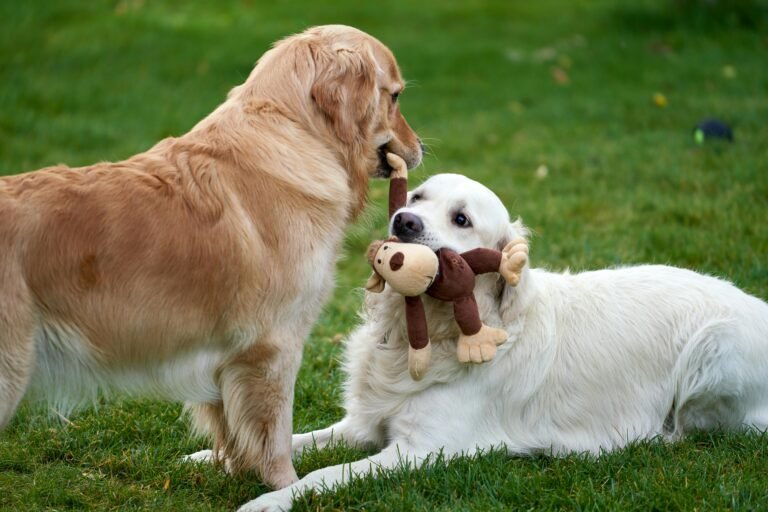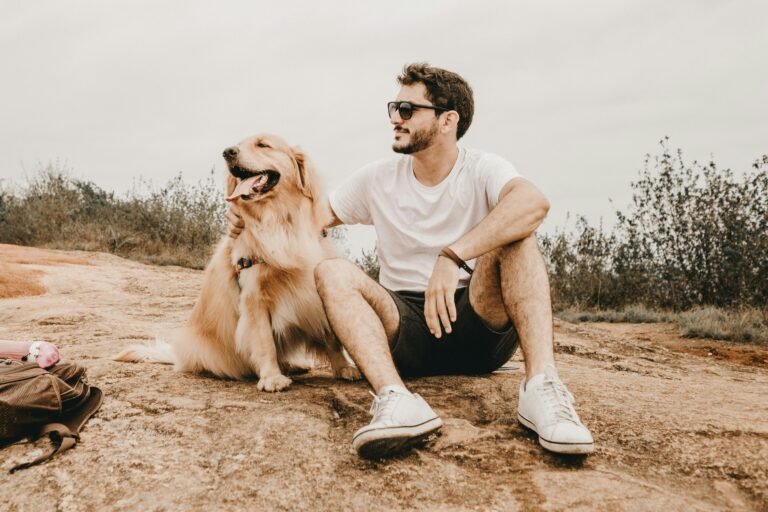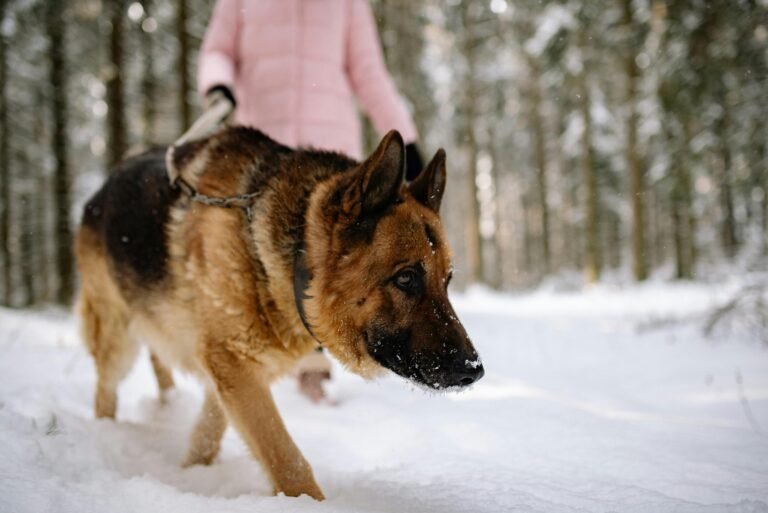Introduction
Your dog twitches, kicks, or softly barks while asleep — and you can’t help but wonder: what are they dreaming about? Are they chasing squirrels in their sleep, reliving today’s walk, or revisiting an old memory? Dogs dream just like we do, and the latest research suggests that those sleepy movements reveal a rich inner life. But do they actually remember their dreams when they wake up? Let’s explore what science — and a little bit of heart — says about it.
1. The Science of Dog Sleep
Dogs experience similar sleep cycles to humans: light sleep, deep sleep, and REM (rapid eye movement) sleep — the stage most associated with dreaming. During REM, their brains show the same patterns of electrical activity as when they’re awake. That’s when you’ll see paws twitch, eyelids flutter, and tails wag in slow motion.
- 🐶 Light sleep: Muscles relax, breathing slows, and they remain semi-alert to sounds.
- 💤 Deep sleep: The body fully rests and repairs tissue.
- 🌙 REM sleep: Brain activity spikes — this is the dreaming stage.
Fun Fact: Puppies and senior dogs spend more time in REM sleep — puppies because they’re processing new experiences, and seniors because they tire more easily.
2. What Dogs Likely Dream About
Dogs dream about what they know — their daily life, routines, and favorite (or least favorite) experiences. Since dreams often replay memories and emotions, your pup’s dream world might include:
- 🐾 Chasing balls, squirrels, or friends at the park.
- 🐾 Walking with you, hearing your voice, or cuddling on the couch.
- 🐾 Exploring scents or running through familiar paths.
- 🐾 Reliving emotional experiences — excitement, play, or even fear.
Essentially, their dreams are snapshots of their world — shaped by love, learning, and instinct.
3. Evidence Dogs Actually Dream
In 2001, researchers at MIT studying rats discovered that their brains replayed maze-running patterns during REM sleep — identical to their waking experiences. This suggested that dreams consolidate memory. Since dog brains share similar sleep structures and functions, scientists believe dogs also “replay” daily experiences in their dreams.
Translation: When your dog kicks in their sleep, they may literally be “running” through a memory.
4. Do Dogs Remember Their Dreams?
This is where it gets fascinating. While we can’t ask dogs directly, behavior and neuroscience give us clues. Dogs likely experience *dream recall* in the form of emotional memory rather than visual detail. They may not wake up thinking, “Wow, that was a great squirrel chase!” but they might feel happy, curious, or anxious based on the dream’s tone.
In other words, they remember how the dream made them feel — not the dream itself.
5. Emotional Memory and Dream Recall
Dogs process emotions through the limbic system, the same part of the brain responsible for memory. This means feelings and sensations from dreams can linger after waking.
- 🐶 Wake up wagging? Probably had a positive, playful dream.
- 🐶 Wake up startled or confused? Possibly a nightmare or stressful replay.
Just like humans, dogs can carry emotional residue from dreams into their behavior — snuggling closer after a bad one, or running around playfully after a good one.
6. The Role of Scent and Sound in Dog Dreams
Unlike humans, dogs’ dreams may be more sensory than visual. Their powerful sense of smell plays a dominant role in memory and experience, so dreamscapes could be rich in scents, sounds, and movement rather than clear imagery.
- 👃 Scents: familiar smells like you, home, or other dogs.
- 👂 Sounds: doors opening, footsteps, or nature noises.
- 🏃 Actions: chasing, sniffing, or greeting family members.
Pro Tip: A familiar scent near their bed — like one of your shirts — can help dogs feel secure and may influence pleasant dreams.
7. Do Dogs Have Nightmares?
Unfortunately, yes. Dogs can dream about stressful or frightening experiences, especially those with trauma or anxiety. Rescue dogs, in particular, may whimper, growl, or yelp in their sleep — signs they’re processing old fears.
If you see your dog in distress during sleep:
- ❌ Don’t wake them suddenly — this can startle or confuse them.
- ✅ Gently say their name or make soft noises to ease them out naturally.
- 💖 Offer calm reassurance once they wake — soft voice, gentle touch, and eye contact help them reorient.
8. How Sleep Strengthens Memory
Sleep plays a huge role in learning and memory consolidation — for dogs and humans alike. During REM sleep, the brain organizes new experiences, reinforcing what’s important and filtering out unnecessary noise. This process strengthens training and recall.
- 🧠 Dogs remember commands better after consistent, restful sleep.
- 🎾 Repetition during the day becomes stored knowledge at night.
- ❤️ Emotional experiences (love, play, fear) deepen long-term associations.
So yes — your dog’s nap isn’t just cute; it’s cognitive growth in action.
9. Signs Your Dog Is Dreaming
- 👁️ Rapid eye movement under closed lids (REM stage).
- 🐾 Twitching paws or gentle leg movements.
- 🐶 Subtle vocal sounds — whimpers, soft barks, or sighs.
- 💤 Tail flicks or nose twitches.
Fun Observation: Larger dogs tend to have longer dreams every 90 minutes, while smaller breeds dream more frequently in shorter bursts.
10. Helping Your Dog Dream Better
Healthy sleep is essential for balanced emotions and memory in dogs. To promote good dreams and restful sleep:
- 🛏️ Provide a quiet, comfortable bed away from loud noises or drafts.
- 🌙 Keep a consistent bedtime routine — predictability reduces anxiety.
- 🎵 Play soft music or white noise for relaxation.
- 🍗 Avoid feeding heavy meals right before bed.
- ❤️ Include gentle affection before sleep — love and security foster peaceful dreams.
11. Can Dogs Recognize Us in Their Dreams?
Many experts believe they can. Since dogs dream of familiar experiences and loved ones, it’s likely that you feature prominently in their dream life. Their emotional bond with you forms a core part of their daily existence — it would make sense that you appear in their mental “highlight reel.”
So when you see them wagging or sighing in their sleep, they might just be dreaming about you — their favorite person in the world.
Conclusion
Dogs dream, feel, and process emotions much like we do — and while they may not “remember” their dreams in words or pictures, the emotions linger. Each nap strengthens their connection to the world around them, and to you. So next time your pup twitches or softly barks in their sleep, smile — their dreams may be filled with moments of joy, love, and loyalty. In the end, their waking and dreaming worlds are both anchored by the same truth: you’re at the heart of them.




